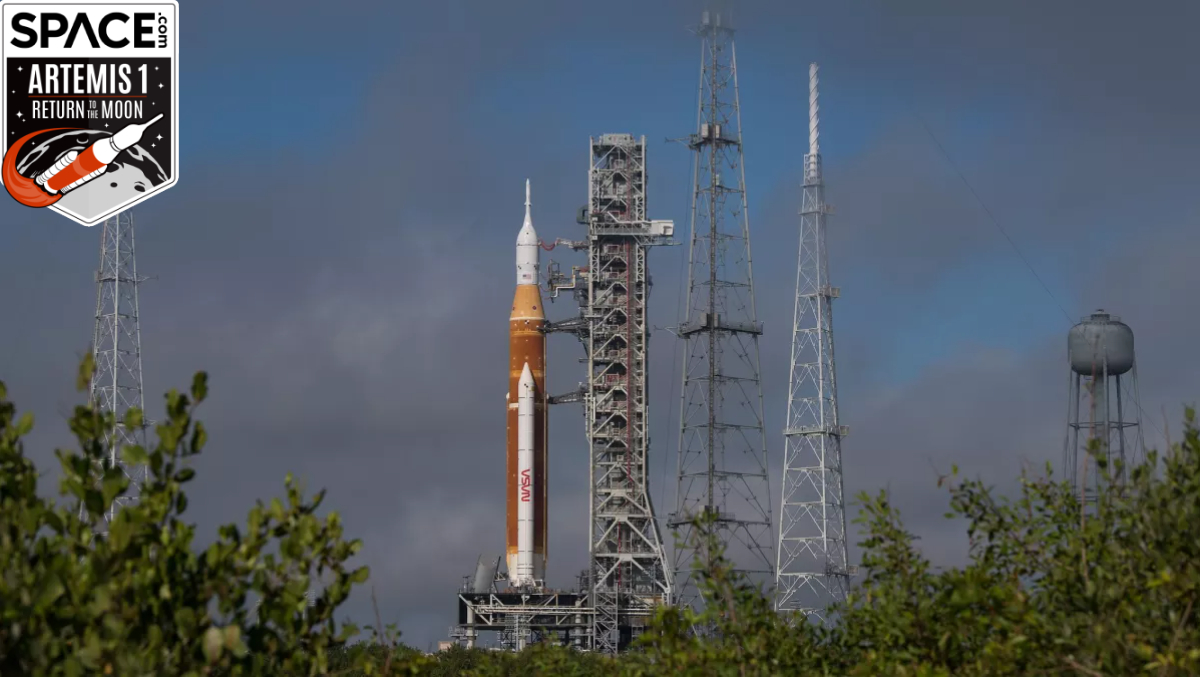CAPE CANAVERAL, Fla. — NASA's new megarocket for deep space flights is ready to attempt its historic first test flight next week The U. S.
space agency on Saturday (Aug. 27) cleared the massive Space Launch System (SLS) rocket and its Orion spacecraft to launch on Artemis 1 , an uncrewed trip around the moon . Liftoff is set for Monday (Aug.
29) at 8:33 a. m. EDT (1233 GMT) from Pad 39B here at NASA's Kennedy Space Center.
The mission is the ultimate test for NASA. After more than a decade of development, the SLS rocket is ready to attempt what will be NASA's first launch of a human-rated rocket bound for the moon in over 50 years. Related: NASA's Artemis 1 moon mission: Live updates More: NASA's Artemis 1 moon mission explained in photos "We're not going to promise that we're going to get off on Monday, " Mike Sarafin, NASA's Artemis 1 mission manager, told reporters in a launch readiness briefing on Saturday, adding that weather or technical issues can cause delays.
"But, you know, we do feel good about our attempt on Monday in terms of our overall setup. " Artemis 1 is the first flight of NASA's Artemis program , which aims to return astronauts to the moon by 2025. As an uncrewed test flight, Artemis 1 will test the SLS rocket's readiness as a heavy-lift vehicle, as well as the Orion spacecraft's fitness to carry astronauts.
NASA's most critical goal is to test Orion's heat shield, the biggest of its kind at 16. 5 feet (5 meters) across, to see if can stand searing-hot temperatures when it slams into Earth's atmosphere at 25,000 mph (40,000 kph) and heats up to 5,000 degrees Fahrenheit (2,800 degrees Celsius) on the trip back from the moon. "Our number one mission priority is to test the vehicle in lunar reentry conditions," Sarafin said.
"We need the rocket to do its job in order to set those initial conditions. " To do that, NASA will launch Artemis 1 on a 42-day trip around the moon. Orion will take about 10 days to reach its long, sweeping orbit around the moon and spend two weeks there, ranging from just 60 miles (100 km) above the lunar surface to 40,000 miles (64,000 km) beyond the moon — breaking a distance record set in 1971 by the Apollo 13 crew.
It'll take 10 more days to leave the moon before returning home on Oct. 10. If all goes well, the spacecraft will splash down in the Pacific Ocean off the coast of California on Oct.
10. Along the way, the mission will deploy 10 tiny cubesats to hunt for water on the moon, study deep-space radiation and perform a variety of other tasks. But first, of course, Artemis 1 has to get off the ground.
"At this time we are, as a launch team, not working on any issues," NASA launch director Charlie Blackwell-Thompson said in the briefing on Saturday. — NASA's Artemis program of lunar exploration — Artemis 1: Going back to the moon — 10 wild facts about the Artemis 1 moon mission The SLS rocket and Orion spacecraft are in good health, with some communications checks remaining to double-check system readiness over the next day. Fueling of the 322-foot-tall (98 m) megarocket is scheduled to begin just after midnight on Monday, Blackwell-Thompson said.
NASA has three chances to launch the Artemis 1 mission in the current window. If it doesn't get off the ground on Aug. 29, there are backup opportunities on Sept.
2 and Sept. 5. The weather forecast for that first attempt on Monday calls for a 70% chance of good conditions, but it's too early to predict conditions on Sept.
2 and beyond, said weather officer Melody Lovin of the Space Launch Delta 45 wing at Cape Canaveral Space Force Station. Email Tariq Malik at tmalik@space. com or follow him @tariqjmalik (opens in new tab) .
Follow us @Spacedotcom (opens in new tab) , Facebook (opens in new tab) and Instagram (opens in new tab) . .

